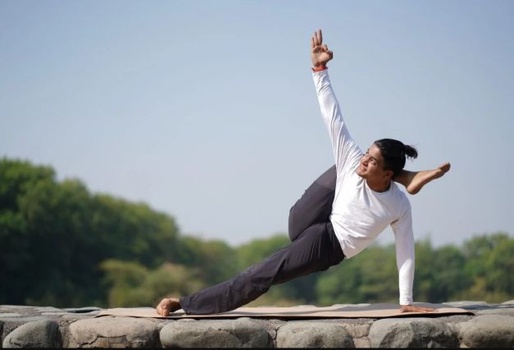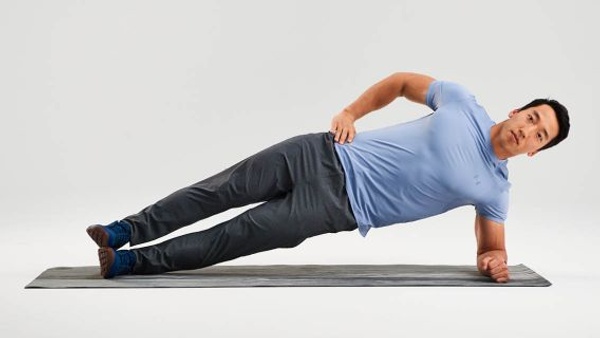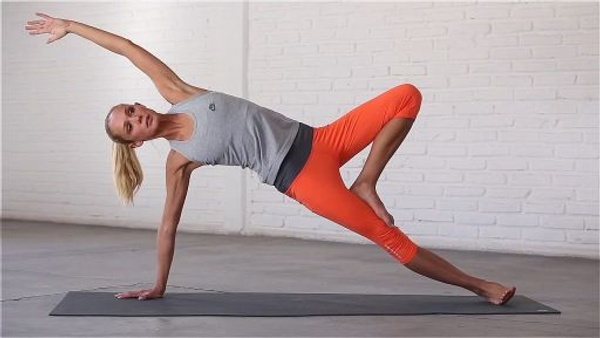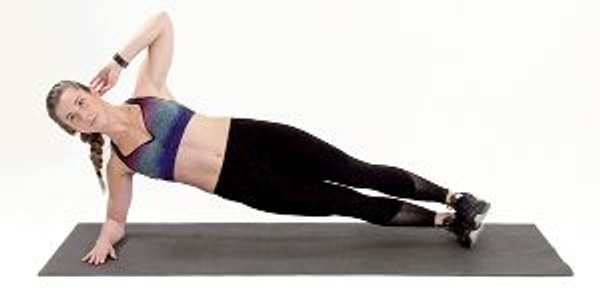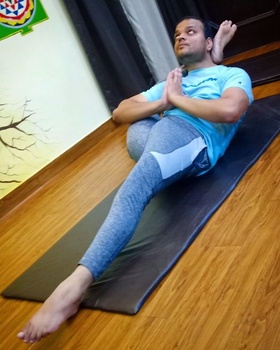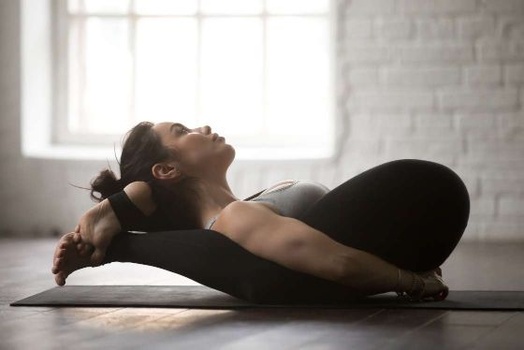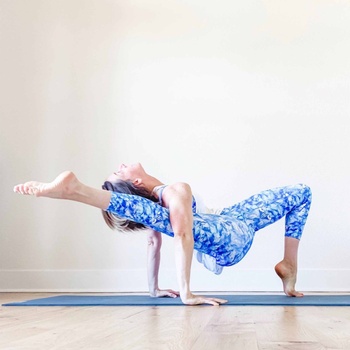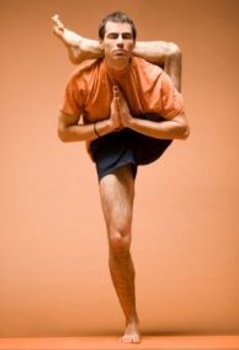Before starting Kala Bhairavasana practice, read about details related to all four phases of performing this asana. These phases include warm-up, posture steps, relaxation, and tips to keep in mind. Now, let’s get started with our practice.
Part 1 - Preparation for Bhairavasana
Here is a list of yoga poses that will help you gain more flexibility and strength for the final Formidable Pose practice:
1. Utkata Konasana (Goddess Pose) - This pose is also known as the Fierce Angle Pose, and it's a powerful intermediate standing yoga pose. The Goddess Pose can be included in Bhairavasana warm-up phase to open hips, chest, inner thighs, and groin muscles. Plus, regular practice of this pose will also help correct body posture and sculpt your inner thighs.
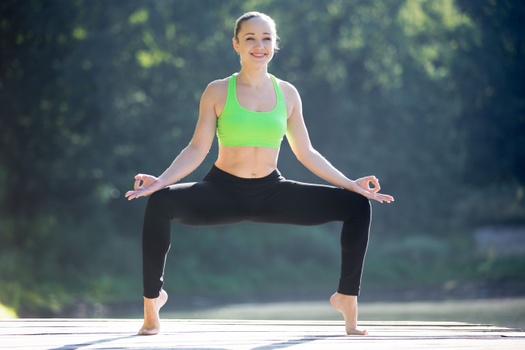
2. Phalakasana (Plank Pose) - In this pose, the body is held in a plank-like position, thin and long. The muscles of the core and shoulders are highly emphasized in Plank Pose, making it easier to find your core and arm balance in Kala Bhairavasana.
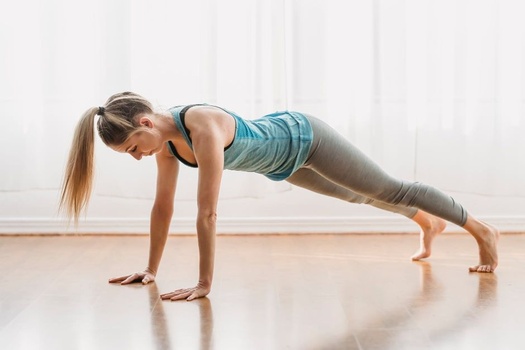
3. Malasana (Yogi Squat) - The Formidable Pose practice requires you to flex deeply and stretch around the groin muscles. Many yoga practitioners (especially males) feel super tight around the groin area; so, Malasana is an excellent posture to improve blood circulation and muscle flexibility around those areas.
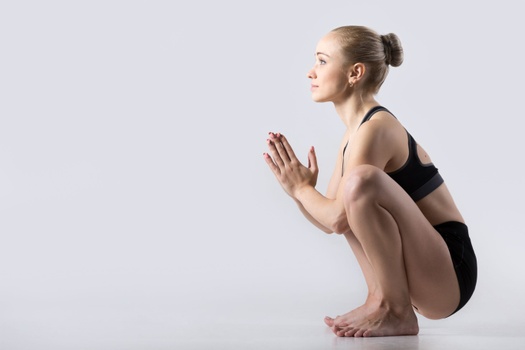
4. Camatkarasana Variation (Wild Things Pose Knee to Floor Variation) - If you are just a beginner, the reclining one-legged Bhairavasana will test your balance and might be challenging for the core. So, it's good to warm up in Wild Thing Pose with a variation of keeping one leg on the ground.
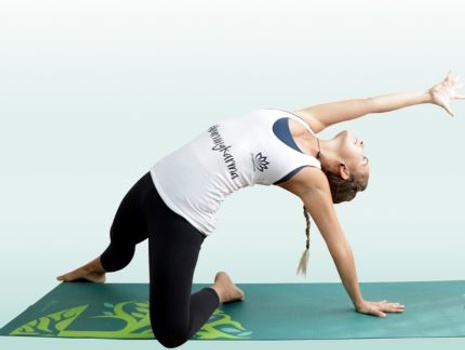
Image Credits: jivayogalive.com
Once you feel comfortable getting both legs up, you can balance in the full Camatkarasana position and prepare for the final Formidable pose.
Part 2: Step-by-Step Instructions to Perform Kala Bhairavasana
To avoid injury and reap the most out of your practice, read all the below-mentioned step-by-step instructions to perform Bhairavasana:
Step 1- Sit down on the mat in the Staff Pose (Dandasana), and stretch both legs forward.
Step 2- Bend the right knee and hold the same leg’s foot with both hands.
Step 3- Inhale deeply, raise the right leg with the help of your arms, lift the leg upwards and place it behind the neck.
Step 4- Once the leg placement behind the neck is comfortable and not hurting, keep both hands on the side and lift your body from the mat. (Keep breathing normally here).
Step 5- Now, get into a plank position with both hands on the ground and balancing the core on one leg.
Step 6- As the breath intensifies, breathe in deeply and raise the left hand from the mat.
Step 7- Now the pose is balancing on one leg and one arm, and here one must try to breathe normally throughout the hold.
Step 8- Exhale deeply and get back in the one-legged plank by bringing the left arm on the ground.
Step 9- Continue normal breathing and sit back on the ground with both arms on the sides.
Step 10- Inhale and slowly raise your hands to unwind the leg from behind the back.
Step 11- Exhale deeply once the posture is all released. Rest for a few seconds and repeat the same on the left leg.
Performance Duration for Beginners: Hold Bhairavasana on each side for 10 to 20 seconds.
Performance Duration for Advanced: Hold Bhairavasana on each side for 30 to 90 seconds.
Part 3: Things to Keep in Mind
If you want to make the Formidable Pose experience more beneficial, follow these added words of caution during the final practice:
Pay attention to your breathing: This is a challenging yoga asana, so it is crucial to be mindful of your breathing. If a beginner yogi is not aware of the proper breathing technique, there’s a high chance that they won’t be able to balance this posture. The more conscious you are about breathing the right way, the faster you’ll be able to balance.
Do not over-stretch: Overstretching can cause unnecessary wear and tear around muscles. Therefore, if your body feels uncomfortable (especially around the groin and neck) holding this posture on one leg and one arm, unwind immediately and stop the practice there.
Part 4: Relaxing Poses After Bhairavasana
It’s very important to rest your lower body and decompress the build-up of tension around the spine after your Bhairavasana practice. Here is the list of follow-up relaxing yoga postures that you can follow:
1. Kapotasana Variation (Pigeon Pose Sleeping Variation) - Start from Down Dog and flex one leg up and hold it up for a few seconds. Now bend the knee, sit down on the mat, and place the same leg forward, while keeping the other leg engaged and stretched at the back.
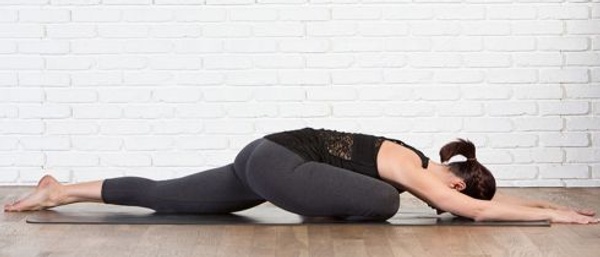
Image Credits: fixthelife.com
Now, get down low by putting your head on the ground and the abdomen onto the forward leg. While you’re here, relax your groin, glutes, and hip flexors. If possible, you can stretch out your arms forwards and feel even more relaxed around your shoulders and neck.
2. Paschimottanasana (Seated Forward Fold) - Continue relaxing the shoulders, neck, and hamstrings by sitting in a forward fold posture. Sit down in Dandasana and flex your toes facing towards you.
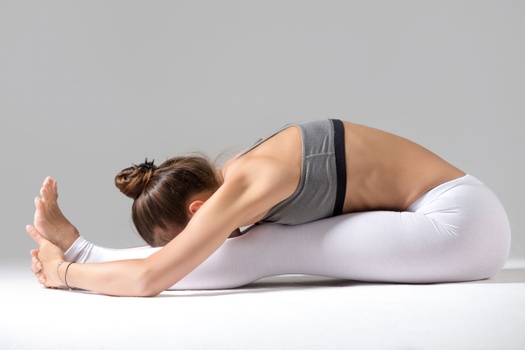
Inhale deeply, raise both arms above you first, and then lower down with your chest resting on the knees. Here, stretch both your arms forward and keep breathing consistently. In addition to relieving stress from the upper body and hamstrings, this pose will also aid in digestion and kidney function.
3. Savasana (Corpse Pose) - Finally, get into the Corpse pose as this pose will help you release excess tension left untreated in any part of the body. This pose will assist each muscle beyond simple relaxation by lowering the blood pressure and heart rate.
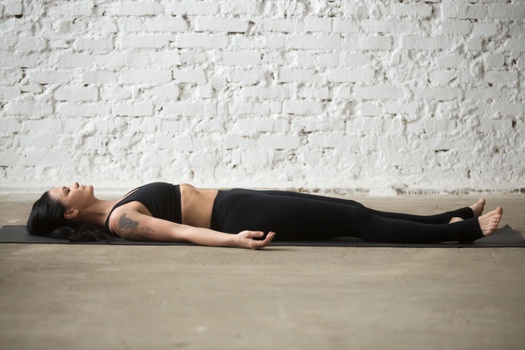
Make sure your breathing is consistent, deep, and conscious. Close your eyes and dive into a deep meditative practice, preparing your body for a semi-sleep session.
